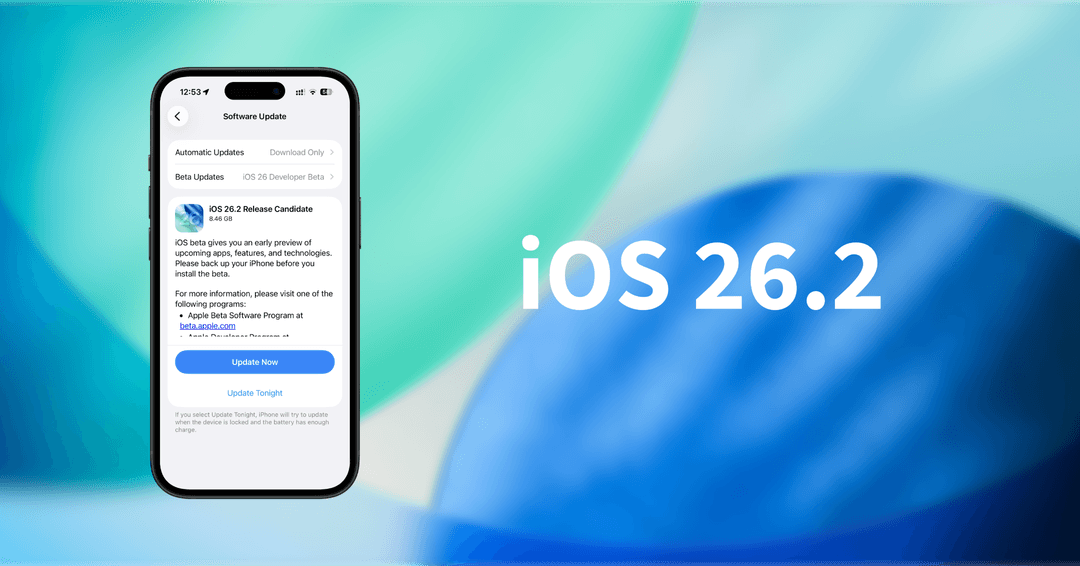Crypto & Blockchain
Crypto Assets Under Japan's Financial Instruments Act: Panel Discussion Summary
WebX 2025 Japan - Asia's Leading Web3 Conference
8 MIN READ
By Matthew H.
Published:
| Updated:
Crypto Assets Under Japan's Financial Instruments Act: A Comprehensive Legal Analysis
Date: August 25, 2025
Venue: The Prince Park Tower, Tokyo, Japan
Panelists:
Satsuki Katayama
House of Councillors, Liberal Democratic Party (LDP)
Chair, Budget Committee (Kessan Iincho)
Chair, Research Commission on Finance and Banking Systems (Kinyu Chosa-kai Cho)
Deputy Secretary-General, Liberal Democratic Party (2022-)
Former Minister of State for Regional Revitalization, Regulatory Reform, and Gender Equality (2018-2019)
Educational Background: Faculty of Law, University of Tokyo (1982); CSE of ENA, France (1985)
Career includes senior positions at Ministry of Finance and extensive parliamentary experience
Noriyuki Hirosue
Founder & CEO, bitbank, inc (2014-)
CEO, Japan Digital Asset Trust Establishment Preparatory Corporation (JADAT) (2022-)
Former executive roles at GMO Internet, Inc., GaLa, Inc., and Commuca, Inc.
Started career at Nomura Securities Co., Ltd.
Recognized as a pioneer in Japan's crypto asset industry
Masakazu Masujima
Partner, Mori Hamada & Matsumoto
Specializes in fintech, M&A, and corporate finance
Over 10 years dedicated to Japan's crypto industry since 2012
Legal advisor to Japan Cryptocurrency Business Association, Japan Blockchain Association, and Blockchain Collaborative Consortium
Ambassador, Global Blockchain Business Council
Moderator
Yosuke Shiraishi
Vice Chairman, Japan Crypto Asset Business Association (JCBA)
CEO, ARIGATOBANK and MZ Cryptos
Former head of payment products at Yahoo (launched PayPay)
Chairman, stablecoin department of JCBA
Multiple roles in Web3Fund, HashPort, and LDP Web3 Project Team
Key Discussion Topics and Insights
1. U.S.-Japan Cooperation on Stablecoin Recognition
Background Context
The discussion opened with insights into international cooperation on digital asset regulation, particularly between the United States and Japan. Participants highlighted the evolution of U.S. policy under different administrations and its impact on global regulatory frameworks.
Key Points Discussed
Historical context of Japan's Securities and Exchange Act structure, originally derived from U.S. post-war influence
Changes in U.S. crypto policy during the Biden administration
Importance of harmonizing rules between markets through proper capital controls, KYC, and anti-money laundering measures
Potential for win-win situations through aligned domestic democratic support and public opinion
2. Japan's Financial Instruments and Exchange Act (FIEA) Framework
Current Regulatory Structure
Participants explained the fundamental shift from treating crypto assets under the Payment Services Act to potentially including them under the Financial Instruments and Exchange Act.
Legal Implications
Dual Classification System: Division of crypto assets into two categories:
Traditional crypto assets (like Bitcoin)
Crypto assets used for fundraising (similar to securities)
Information Provision vs. Disclosure: Deliberate terminology shift to "information provision" rather than traditional "disclosure" requirements
Whitepaper Requirements: Strict penalties for false information in whitepapers
Progressive Disclosure: Requirements for ongoing disclosure until issuers lose network control
Regulatory Oversight Concerns
Securities professionals traditionally handling conventional investment products will oversee fundamentally different crypto assets
Need for specialized understanding of blockchain and crypto asset characteristics
Risk assessment of applying traditional securities oversight to innovative digital assets
3. Market Integrity and Unfair Trading Practices
Insider Trading and Market Manipulation
The panel addressed the absence of clear insider trading regulations in Japan's current crypto framework and proposed solutions under FIEA.
Prohibited Practices to be Regulated
Insider Trading: Traditional definition applied to crypto markets
Market Manipulation: Including pump and dump schemes
Front-running: Exploiting advance knowledge of transactions
Wash Trading: Creating artificial trading volume
Regulatory Approach
Comprehensive "basket clause" covering various unfair trading practices
Learning from established U.S. regulatory practices
Creation of supervisory tools and penalty frameworks
Licensing requirements for investment managers and advisors in crypto space
4. Investment Advisory and Management Services
New Licensing Requirements
Extension of Financial Instruments and Exchange Act licenses to cryptocurrency investment advisors and managers to prevent unlicensed parties from:
Making price manipulation claims
Providing investment advice without proper authorization
Conducting investment seminars without regulatory oversight
Using social media for unauthorized investment promotion
5. Tax Reform Implications
Current Tax Structure
Crypto assets currently taxed as "miscellaneous income" under progressive tax rates
Maximum tax rate can reach 55% (including local taxes)
This high taxation significantly hampers trading volume and industry growth
Proposed Tax Reform
Target Rate: 20% flat tax rate, aligning with stock taxation
Separate Taxation System: Moving away from progressive "miscellaneous income" classification
Timeline: Implementation expected within 1-2 years with Cabinet-level commitment
Political Challenges: LDP's loss of parliamentary majority requires coalition building
Industry Impact
Expected significant increase in trading volume
Enhanced competitiveness with other jurisdictions
Improved environment for domestic and institutional investment
Foundation for broader Web3 ecosystem development
6. Stablecoin Development and Regulatory Framework
JPYC Launch
Discussion of Japan's first regulated yen-denominated stablecoin approval and its significance for the domestic market.
Regulatory Structure
Licensing under revised Payment Services Act
1:1 backing with Japanese yen through bank deposits and government bonds
101% reserve requirement within three business days of issuance
Target issuance of ¥1 trillion over three years
Strategic Importance
Reduction of reliance on dollar-denominated stablecoins (USDT, USDC)
Enhanced efficiency in international remittances and cross-border transactions
Foundation for broader blockchain-based financial services
Potential influence on Japanese government bond markets
7. Industry Compliance and Business Operations
Exchange Business Impacts
Hirosue provided industry perspective on regulatory transition challenges and opportunities:
Positive Aspects
Potential increase in trading volume through tax reform
Enhanced legitimacy and institutional acceptance
Clearer regulatory framework reducing uncertainty
Foundation for domestic industry growth
Challenges
Increased compliance obligations and costs
Higher regulatory standards compared to Payment Services Act
Need for enhanced security measures and risk management
Preparation for potential asset leakage risks
Implementation Strategy
Industry commitment to proper acknowledgment and response to new framework
Need for ongoing discussions between industry and regulators
Phased approach to implementation allowing for adjustment period
8. Cryptocurrency Asset Definition and Scope
Payment Services Act Definition
Current definition encompasses digital assets that can be:
Used for payment to unspecified persons
Used to buy or sell specific items with counterparties
Recorded electronically and transferred using electronic information processing systems
Excluded categories: domestic currency, foreign currency, currency-denominated assets, electronic payment methods, securities under FIEA
Scope of Reform
Discussion of which cryptocurrency types might be included in tax reform:
Highly liquid assets like Bitcoin
Payment-focused stablecoins
Investment-oriented cryptocurrencies
Exclusion of clearly suspicious or non-compliant tokens
9. International Regulatory Alignment
Comparison with U.S. GENIUS Act
Strong alignment noted between Japan's proposed framework and U.S. regulatory developments:
Similar positioning of crypto assets as digital commodities
Comparable disclosure obligations and market oversight
Aligned approach to broker and advisor qualification requirements
Coordinated regulatory philosophy despite different legal structures
European MiCA Regulation
Recognition of Europe's more detailed and strict regulatory approach
Japan's balanced approach between innovation and oversight
Learning from global regulatory experiences while maintaining domestic priorities
10. Future Industry Outlook and Business Opportunities
Traditional Finance Integration
Participants emphasized the potential for fusion between traditional financial services and crypto industry:
Tokenization Opportunities: SBI Holdings' stock tokenization initiatives
On-chain Efficiency: Enhanced efficiency of existing financial systems through blockchain technology
New Financial Innovations: Combining strengths of traditional institutions with crypto capabilities
Ecosystem Development
Stablecoin Foundation: Building comprehensive ecosystem with stablecoins, cryptocurrencies, and security tokens operating at scale
Permissionless Blockchain Integration: Creating environment for security tokens on permissionless blockchains
Cross-border Payment Solutions: Enhanced international payment capabilities
Generational and Technological Shifts
Katayama's observations on industry evolution:
Recognition of diverse professional backgrounds in crypto industry absent from traditional Japanese financial institutions
Compatibility with Internet and SNS generations for investment approaches
Lower barrier to entry and instant transaction capabilities
Alignment with national asset management strategy
Technical and Regulatory Implementation Details
Reserve Requirements and Asset Backing
JPYC Structure: 80% government bonds, 20% deposits initially
Comparison with Global Standards: Higher reserve requirements than some international stablecoins
Risk Management: Addressing depegging risks and liquidity shortage concerns
Cross-border Payment Innovation
Institutional Applications: Hedge funds and family offices interest
Carry Trade Opportunities: Exploiting interest rate differentials
Corporate Treasury Management: Enhanced efficiency in global fund management
Credit Card Integration: Stablecoin-based payment systems with major providers
Blockchain Infrastructure Considerations
Multi-chain Deployment: Support for Ethereum, Avalanche, Polygon platforms
Interoperability: Integration with existing financial networks
Security Protocols: Comprehensive KYC/AML compliance frameworks
Scalability Planning: Preparation for significant volume increases
Political and Economic Context
Prime Minister Ishiba's Position
Reference to Prime Minister Shigeru Ishiba's statements on crypto assets being "extremely important" for Japan's economic future, though challenges noted regarding his general fiscal policy stance.
LDP Policy Framework
Web3 Project Team initiatives within ruling party
Coordination with multiple political parties following LDP's loss of parliamentary majority
Integration with broader economic policy including NISA investment programs
International Competitiveness
Recognition of need to maintain Japan's position in global Web3 and digital asset development while other jurisdictions advance their regulatory frameworks.
Conclusion and Next Steps
The panel concluded with strong optimism about Japan's crypto regulatory future, emphasizing the transformative potential of the proposed changes. Key takeaways include:
Regulatory Leadership: Japan positioned as a global leader in comprehensive crypto regulation
Industry Maturation: Movement toward institutional-grade infrastructure and compliance
Economic Integration: Crypto assets becoming integral to national wealth formation strategy
Innovation Balance: Maintaining innovation while ensuring consumer protection and market integrity
International Cooperation: Continued alignment with global regulatory best practices
The discussion represented a watershed moment in Japan's crypto regulatory evolution, signaling government commitment to creating a competitive, well-regulated digital asset ecosystem that could position Japan as a regional leader in Web3 innovation and institutional crypto adoption.







